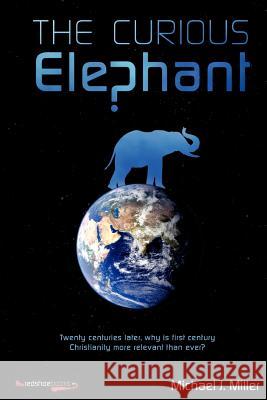The Curious Elephant » książka
The Curious Elephant
ISBN-13: 9789768212764 / Angielski / Miękka / 2011 / 358 str.
The Curious Elephant completes the elephant book trilogy, which includes The Blind Man's Elephant and The Hijacked Elephant. In all three, the elephant is a metaphor for Christianity. Pastors of religious organizations claim the US and the other Christian nations of the world are not in end-time prophecies, but nothing could be further from the truth. Lacking a clear understanding of the relevance of the covenants to Christianity, however, we've lost our understanding of the gospel Christ actually delivered in the first century. Christians are supposed to be followers individually, not denominationally, of Christ. Organized "churchianity" has made 21st century Christianity irrelevant. No wonder so many young people are becoming atheists. Lacking understanding of the gospel delivered by Christ in the first century, it's no surprise we are completely in the dark about understanding the end-time prophecies. It's like trying to unravel a riddle when someone has given us an incorrect clue. It's hopeless. And it shows today especially when we are repeatedly told the US is not in end-time prophecies. Comprehending the gospel delivered by Christ in the first century, rather than our 21st century evolutionary version, we can clearly see that the US is currently in the eye wall of the still distant, yet approaching climactic Apocalypse storm according to the prophecies in the Biblical record. The Curious Elephant, therefore, first discusses the significance of the covenants in relation to our Biblical history, both the Law and Abrahamic covenants from the first century perspective. We discover that the Biblical record is the singular story of the main characters, including the US, and the two covenants, from Genesis to Revelation. The second section of the book let's the Biblical record tells us what exactly the gospel is and for whom it was destined, though church organizations dismiss this plain fact today. Then, we look at the prophecies, the third section, finally recognizing ourselves in the pages of both the old and new testaments. The remaining sections round out the book. Each chapter in the book has the relevant Biblical verses bracketed for easy reference. Every sufficiently curious reader, therefore, can read it directly from the Biblical record. You can weigh the facts and form your own conclusions, individually. A flow chart at the end of the book diagrams all the relevant characters and historical events making it easy to follow the big picture from Genesis to Revelation. In the end, we discover the answer to the crucial question, "Twenty centuries later, why is first century Christianity more relevant than ever?"











